Gallery: The Headquarters Of Wildland Firefighting
November 21, 2024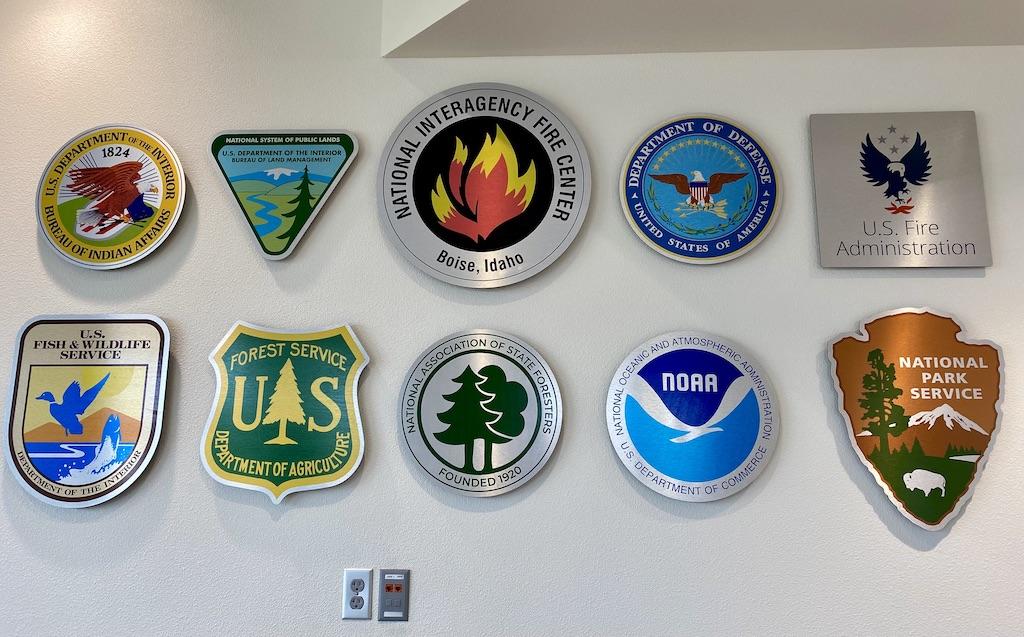
A Multiagency Partnership
The National Interagency Fire Center is a partnership of five agencies with responsibility for wildland fire management of 674 million acres of federally owned lands, the National Weather Service, and the U.S. Fire Administration, with participation by the U.S. military and state forestry services. Emblems of the participating agencies overlook the lobby of the Jack Wilson Building on the NIFC campus, named after the first director of what originally was known as the Boise Interagency Fire Center. Now each agency has its own director.
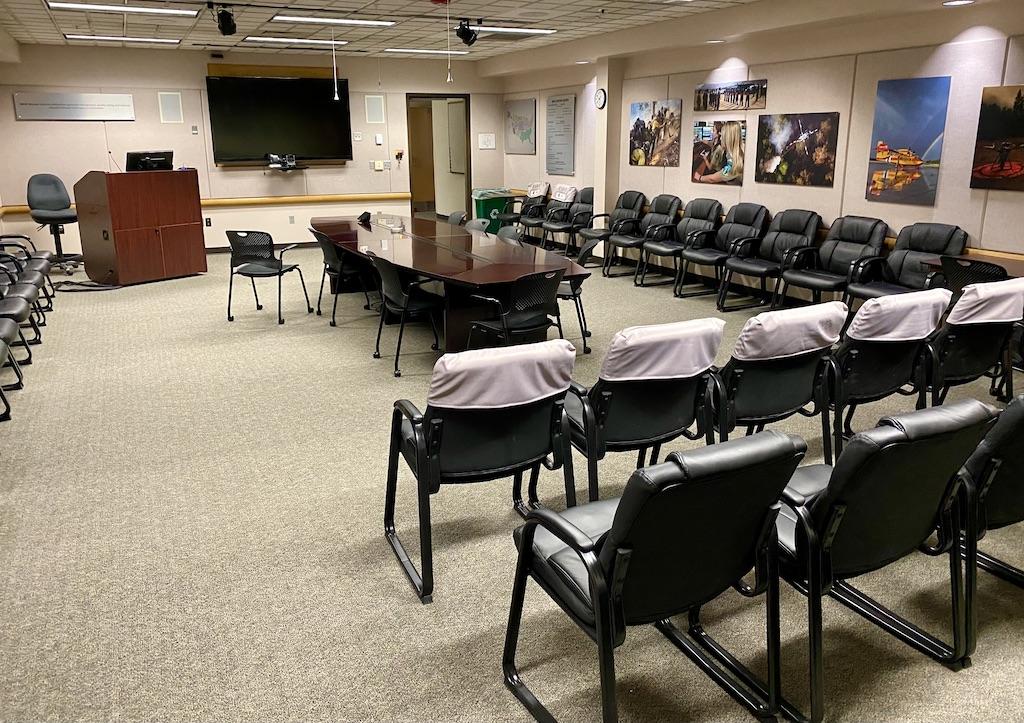
Preparedness Levels
The nation’s available resources for wildfire suppression—ranked by Preparedness Levels (PL) 1 through 5—are determined by a National Multi-Agency Coordination Group (NMAC) that meets in this conference room and includes participation by state firefighting agencies. At the time of BCA’s visit, the NMAC had set the national preparedness level at PL5 twice this year, meaning that national resources were heavily committed. This was due in part to federal agency participation in relief efforts following Hurricanes Helene and Milton.
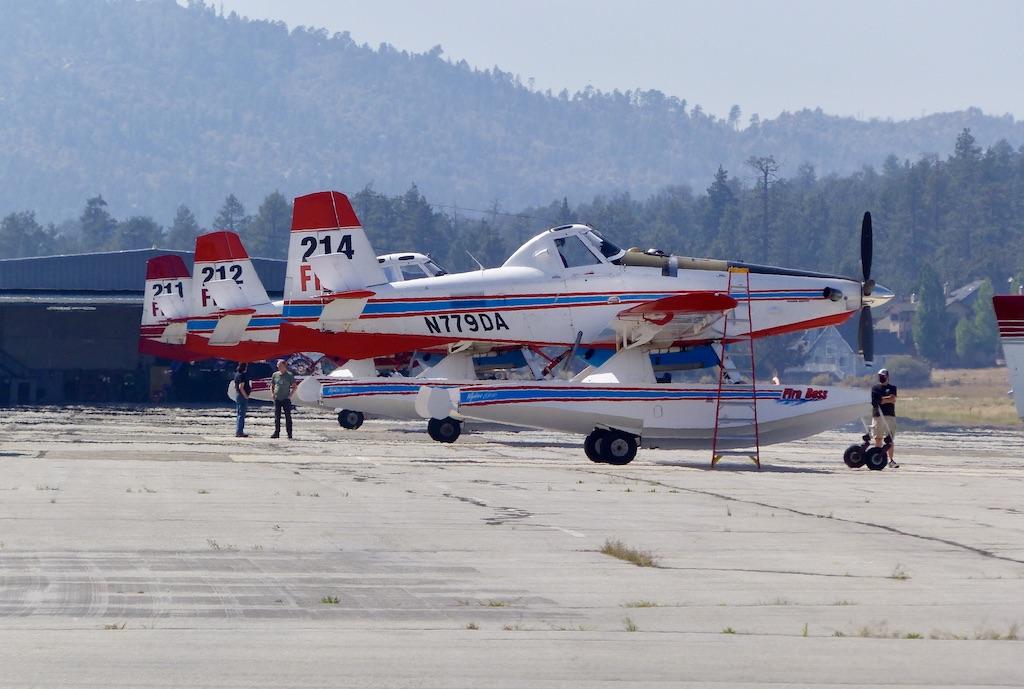
Fire Bosses
The Bureau of Land Management owns and manages the NIFC and is one of its two major users of firefighting aircraft with the U.S. Forest Service. They and other agencies draw from a government-owned and contracted fleet of 340 aircraft, including 29 large air tankers, 35 smaller tankers, 10 single- and multiengine water scoopers, 161 helicopters, 97 fixed-wing support aircraft, and eight specially equipped C-130s that can be activated by the military. The number can be expanded by anywhere from 700-to-1,000 additional aircraft through On-Call or “call-when-needed” contracts.The Air Tractor AT-802F Fire Boss, an amphibious single-engine water scooper shown above, is a mainstay of the fleet.

Agility Over Terrain
The Bureau of Land Management leads in contracting single-engine air tankers (SEAT) and amphibious water scoopers, primarily Air Tractor AT-802 and float-equipped 802F Fire Bosses. SEATs equipped with fixed landing gear are based at smaller airports throughout the western U.S. The AT-802’s maneuverability means that it can build a winding fire line in steep undulating terrain. The hopper in the Pratt & Whitney Canada PT6-powered aircraft carries 807 gal. of retardant.

First Responders
Smokejumpers with expertise in initial-attack firefighting can reach remote locations fast, parachuting from 3,000 ft. above the ground with 85 lb. of gear. The Bureau of Land Management operates smokejumper bases in Boise and Fairbanks, Alaska, that are used to train and dispatch wildland firefighters from CASA 212, DeHavilland Canada Dash 8, DHC-6 Twin Otter, and Dornier-228 transports. The U.S. Forest Service operates seven smokejumper bases.
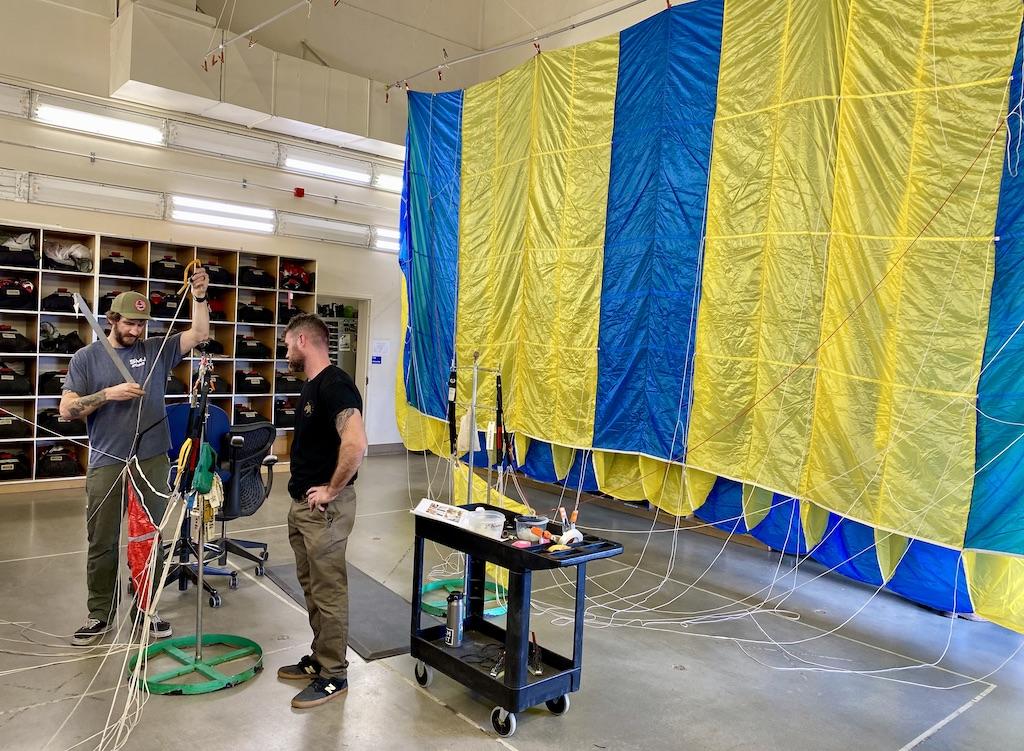
Annual Inspection
Wildland firefighters with Great Basin Smokejumpers were inspecting their parachute equipment during BCA’s visit in October. The Bureau of Land Management smokejumper group is based at the National Interagency Fire Center.
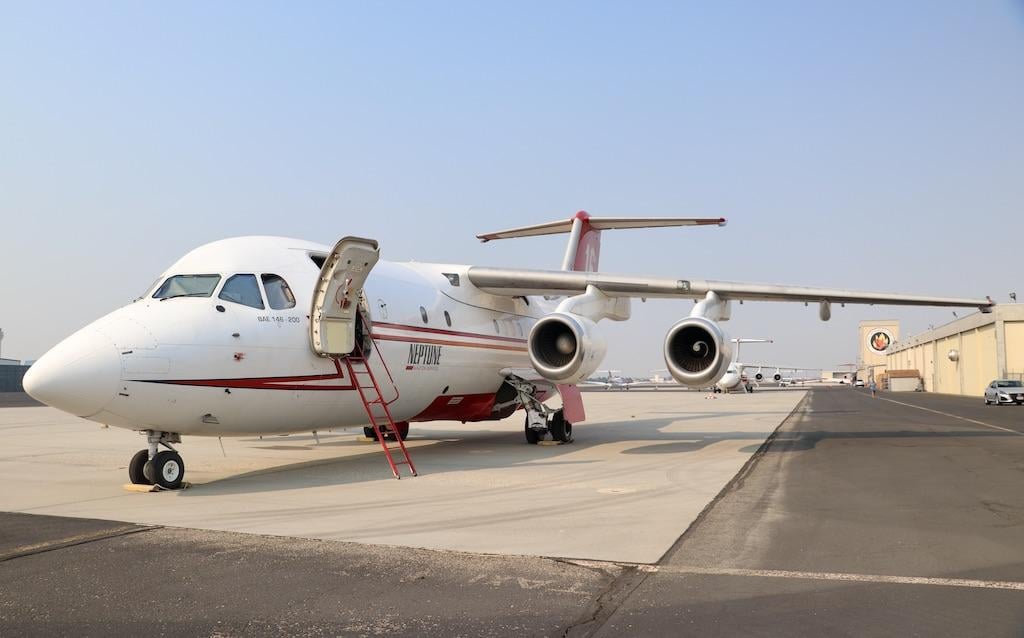
Large Air Tankers
A Neptune Aviation Services BAe-146 air tanker, capable of carrying 3,000 gal. of fire retardant or water, is parked on the ramp in front of the NIFC. The U.S. Forest Service leads in contracting large and very large air tankers, including the BAe-146, MD-87 and DC-10 as well as multi-engine water scoopers like the Canadair CL-415. It uses heavy-lift S-64 Air Crane, CH-47D Chinook and Boeing Vertol 234 helicopters that drop water or retardant via a long line and bucket or by using a snorkel that replenishes an internal belly tank.
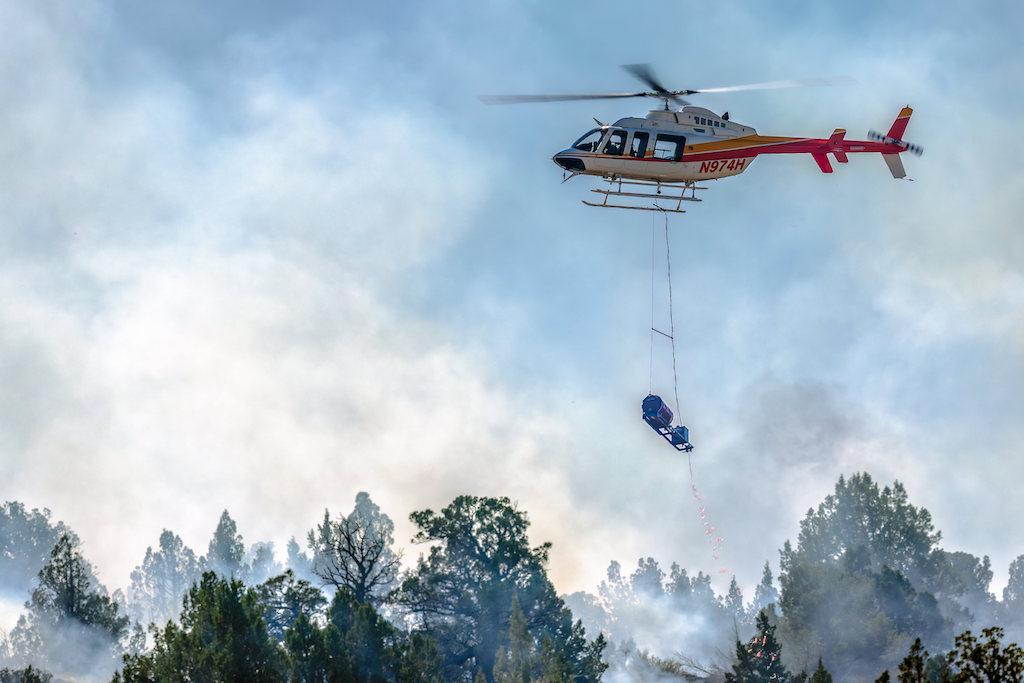
Aerial Ignition
A Bell 407 deploys a drip torch to assist wildland firefighters during the 2022 Graves Creek prescribed fire in Idaho. The pilot using a drip torch must lean far to the side of the window to make certain the torch remains stable while also concentrating on the flight path to make certain he or she follows the narrowly prescribed route.
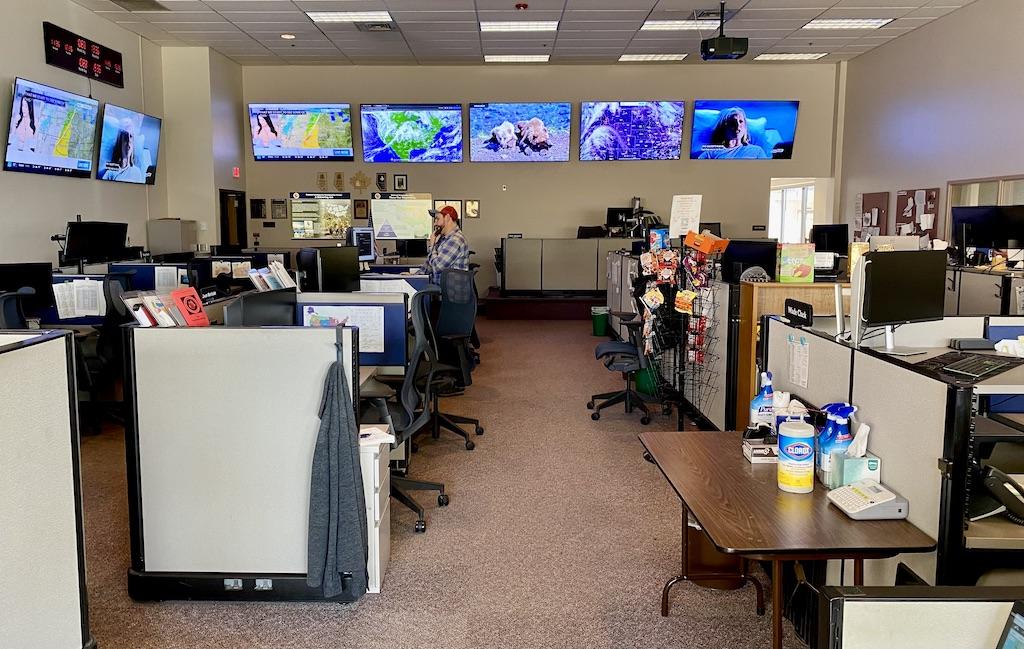
National Dispatch Center
The National Interagency Coordination Center at the NIFC serves as the focal point for coordinating the mobilization of wildland firefighting resources including air tankers, lead planes, helicopters, hotshot crews and smokejumpers for wildland fires and other incidents. It is the top-tier dispatch center in a three-tier system, responding as needed to resource orders from 10 geographic area coordination centers. The geographic area centers respond to orders from local dispatch centers.

Remote Weather Sensing
Portable Incident Remote Automatic Weather Stations (IRAWS) stored on the NIFC grounds can be set up during a wildland fire to provide early warning to fire line personnel as weather conditions change. Portable units and larger, permanent RAWS stations have temperature, relative humidity, solar radiation, precipitation and wind sensors and transmit data via NOAA Geostationary Operational Environment Satellites to multiple locations, including the NIFC.
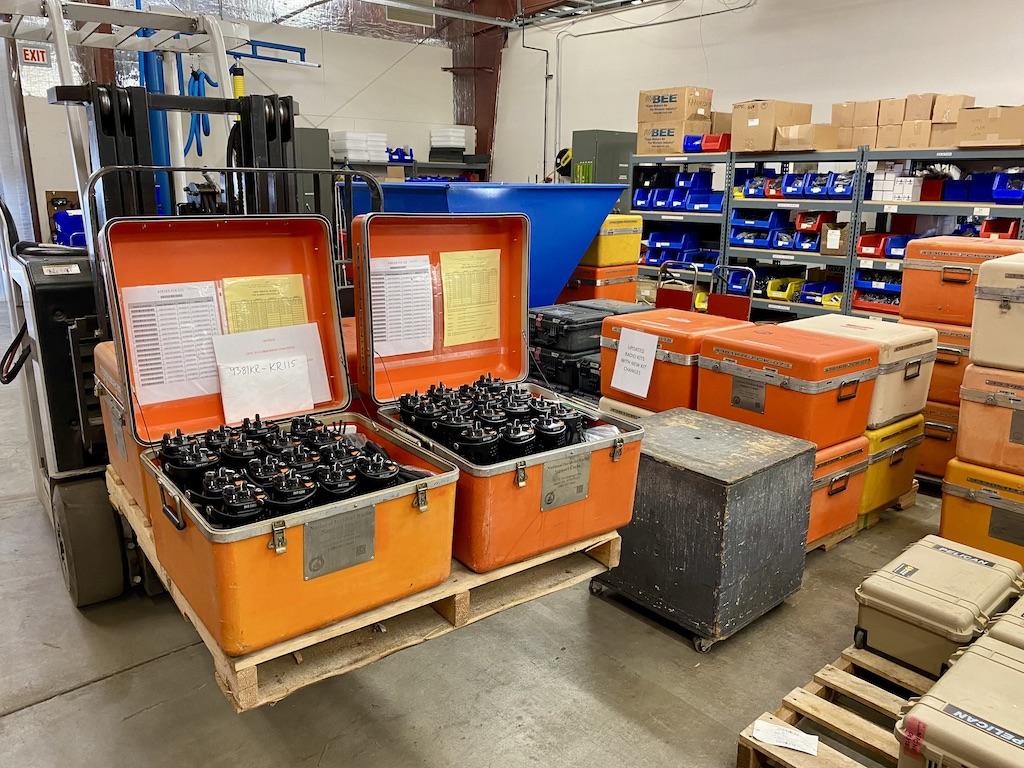
Radio Cache
The National Interagency Incident Communications Division at the NIFC supplies communications equipment to firefighters during wildfires and also for other natural disasters or emergencies. The facility stores 13,000 handheld radios plus antennas, batteries and repeaters, laying claim to being the largest civilian radio cache.

Wildland Firefighters Monument
The walkway through the Wildland Firefighters Monument, located on the grounds of the NIFC, is shaped like a ribbon after the purple ribbon worn in honor of fallen wildland firefighters. Plaques along the path pay tribute to those who have died. These remember the seven firefighters, the pilot-in-command, and a safety crewmember who were killed on Aug. 5, 2008, when the Sikorsky S-61N carrying them crashed during the Iron 44 Complex fire in California’s Shasta-Trinity National Forest. The co-pilot and three firefighters were seriously injured.
The National Interagency Fire Center occupies a 55-acre campus adjacent to Boise Airport in Idaho. Operational since 1969, the center leads the air and ground response to wildland fires on federal lands nationwide. Aviation Week Network’s BCA visited there in October.